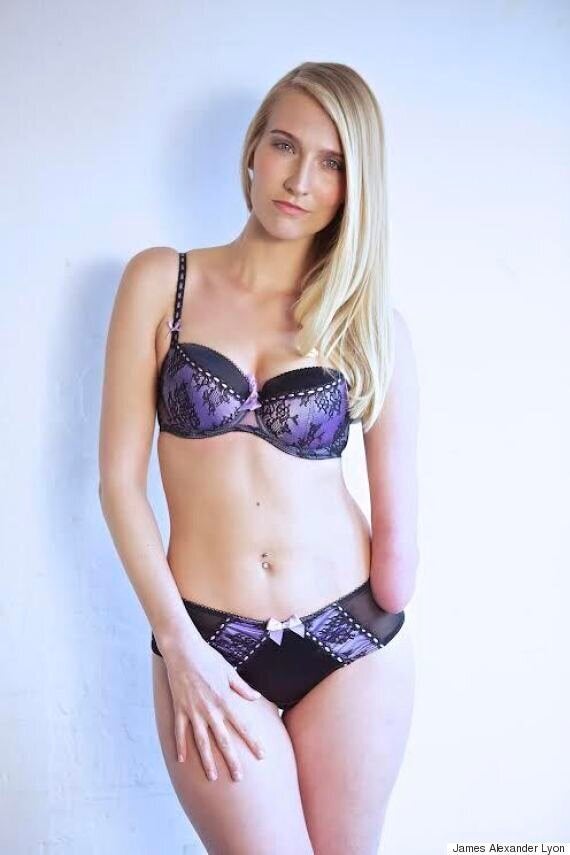
What's the first thing you think of when you think of beauty...?
Who decides what is beautiful?
Is it you, or is it the advertisers' perception of beauty?
What do you think when you see the image below?

© James Alexander Lyon, Lyon Photography
In a world of expansive diversity, we still very much live in a visual age where beauty is in the eyes of the advertiser, and not in the eyes of the beholder.
As the co-founder of new campaign Diversity not Disability, alongside the UK's leading disability Fashion Model, Kelly Knox, we have launched a positive awareness campaign to challenge the beauty ideal. One of the ways we seek to achieve this ideal is by approaching the advertisers, the fashion labels and the beauty brands and asking them why they are not using disability models in their campaigns. Why they are not reflecting the diverse society we live in? Why are disabled people made to feel invisible by brands?
We are committed to challenging society's perception about what is beautiful in a positive and encouraging way, where all body types are celebrated for their uniqueness. We are not here to name or shame brands, but to ask them to acknowledge the gap in the models they are using in their campaigns, and ask them if they would be willing to try something new.
Diversity not Disability aims to encourage fashion brands, beauty labels and advertisers to appeal to a wider audience. To choose the models they use with an inclusive thought process, to represent the diverse society we live in.
Why is there no consistency when using a disabled model? If used once, it's rare they will use again.It's like the latest trend, so some will try it and then tick that's done and they move on. If one leads, the others will follow, it only takes one brand to make a difference and take a leap of faith. Who will be the Pied Piper of fashion? If one in five people in Britain has a disability*, that's 19%** of the UK population that are not being fairly and equally represented in the media. Consumers with disabilities are the largest untapped market.
Both myself and Kelly are active ambassadors in changing the face of beauty and creating positive body confidence. We are especially passionate about the younger generation and building confidence in young people.
Where are the positive role models for young children and teenagers growing up with disabilities?
Many fashion labels are happy to embrace a para Olympian in their campaign, but not all children growing up with a disability enjoys sports. Positive role models are needed to encourage inclusivity in a diverse world where choices are unlimited.
Young people love fashion and are affected deeply by the visual role models they see in magazines. There are countless stories of young people who lack body confidence and are taking their own lives because they cannot live up to the unrealistic perfection of the air brushing.
We want to encourage brands to embrace diversity at all levels in their campaigns and reach an inclusive audience. Disabled people wear clothes too. Disabled people love to wear make-up.
Disabled people love to feel good and look good.
Kelly and I are committed to making a difference and paving a new way in developing positive body confidence in the face of negative attitudes towards what is beautiful. We feel it is every person's birth right to grow up confidently, accepting and loving the skin they are in. The younger generation are more accepting of difference and if we start young enough, everyone will grow up celebrating their individuality. Some disabilities are visual, some are not, but nobody should be made to feel different. We are all human beings and we live in a world where we can love and accept one another based on what's on the inside, in the heart. So let's join together and celebrate diversity at all levels, and build a world that is inclusive and equal for all.
Beauty should not be defined by ability, size, age or colour - beauty is for everyone.
Join us at #DiversitynotDis
*Government. Gov.uk Jan 2014
** Family Resources Survey 2014
This February, HuffPost UK Style is running a month-long focus on our Fashion For All campaign, which aims to highlight moments of colour, size, gender and age diversity and disability inclusivity in the fashion and beauty world.
We will be sharing moments of diversity at London Fashion Week with the hashtag #LFW4All and we'd like to invite you to do the same. If you'd like to blog about diversity or get involved, email us here.